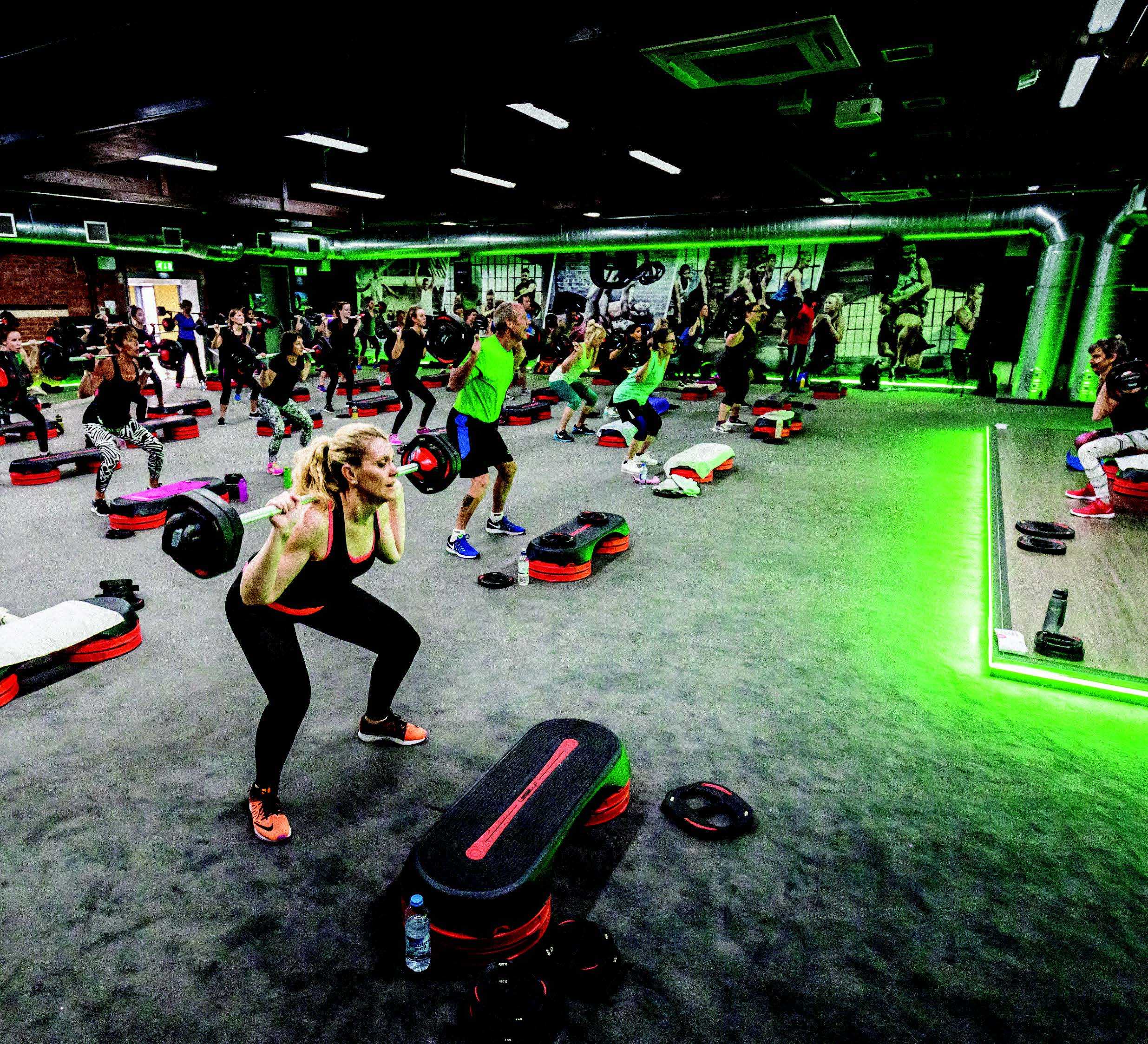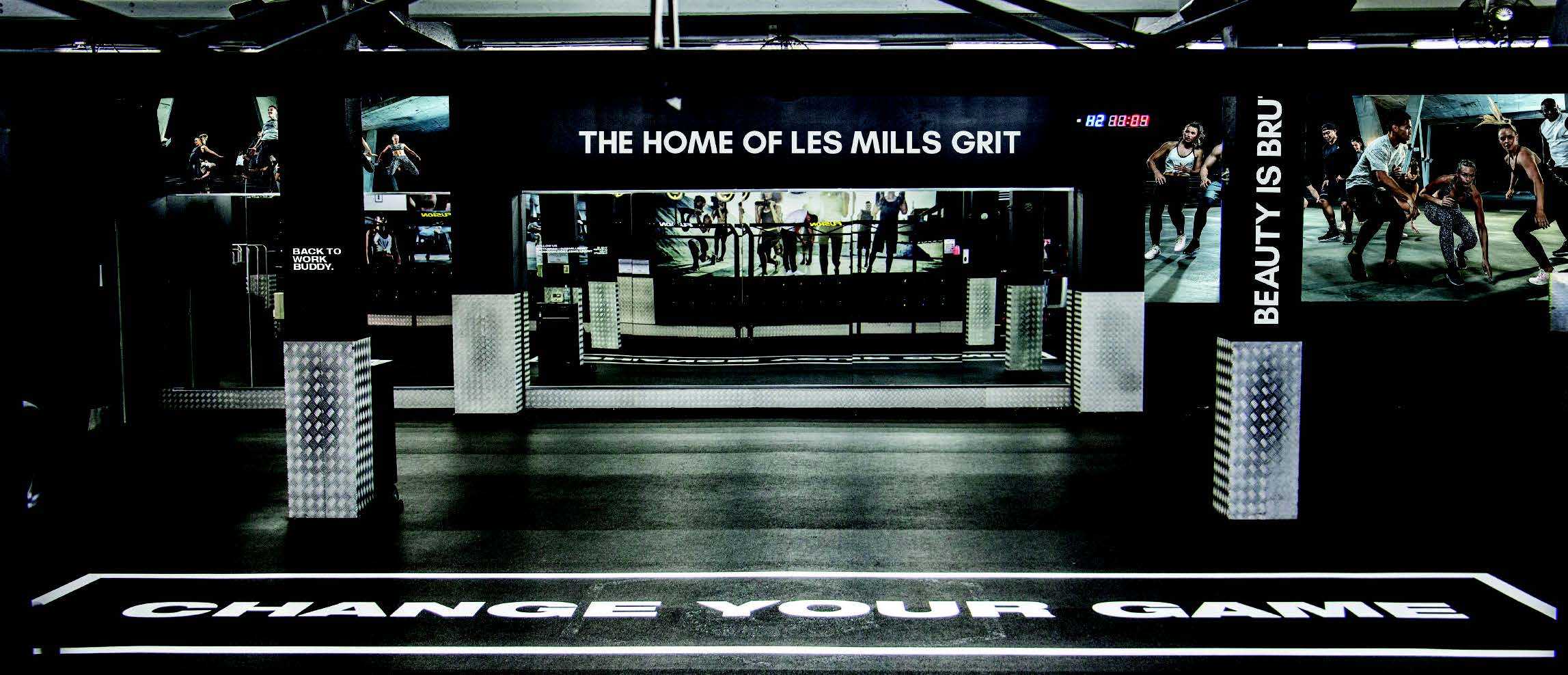
For years, exercise studios have looked almost identical with bright lights, wooden floors and a wall of mirrors. But times are changing, says Matt Adey, customer experience director at Les Mills.
Mirror, mirror...
For many people, working out is motivated by weight loss. Surrounding them with bright lights and mirrors does not create a very welcoming environment and many studios are doing away with them altogether.
Group fitness is all about connection and motivation. Without mirrors, participants are no longer self-conscious about seeing their reflection and can immerse themselves in the workout. Mirrors only appeal to a small percentage of a class and removing them can sometimes be all that’s needed to drive up participation numbers and get new people involved.
A softer landing
Another new studio design trend is the switch from a typical sprung floor to carpeting. While useful for shock absorption, sprung flooring can present slip hazards from sweat and spilled water bottles.
The increase in HIIT-style programming also involves a lot of side-to-side and forward and backwards movements, made exponentially easier with a treated industrial carpet finish.
Carpet is also cheaper for operators both in terms of the initial investment and in the long term. It’s far more cost effective to replace a tile or two than an entire floor. Carpet also provide a warmer and more inviting environment for yoga or mind/body classes.

Show me a sign
Operators are increasingly embracing graphics and colours in their flooring to enhance the look and feel of classes. These can help manage classes too. For example, approximately 20 per cent of participants stand at the front of a class, while the other 80 per cent hover at the back. Some flooring incorporates circles in the design to indicate where people should stand in group exercise classes allowing operators to maximise the space.
Get the tech right
Les Mills offers virtual programming to 12,000 clubs globally with that number set to double in the next two years. This presents a major opportunity for gyms to increase revenue. Investing in concert-quality sound equipment and life size screens can be a big driver for operators looking to cater for millennials, who want to exercise on their own terms.
Even if virtual fitness is not an option, a quality sound system combined with a great programme can make all the difference to the workout experience.
Low lighting
Adjusting the lighting scheme is one of the easiest ways to change the atmosphere of a studio. A small investment in cost-effective adaptive LED lighting allows operators to create a bespoke experience for each class.
Mood-lifting graphics
Wallpaper and wall graphics create energy and can bring brands alive in a way that plain white walls can’t. Using images that resonate with the company ethos and colours helps to extend their brand image throughout the club. The key is to select warm, colourful wall coverings with a blend of motivational messaging and/or images to promote health, movement and wellbeing.
Size matters
Studies show that the bigger the studio, the more attendance a club can expect in group exercise classes. Group exercise can be the most profitable element of a club, being cheaper to run, both live and virtual, than to invest in new gym equipment.
If studios are too small, classes become over-subscribed and those that don’t get in get fed up and don’t return. Consider if you can move a wall, rearrange space within the club or reorganise storage to create larger studios.
So there are endless options
With very little change in studio design in the last 30 years, it’s an area that is ripe for innovation. For operators looking to build a new studio or redesign an existing one, the key is to find the right mix of technology and aesthetics to create an environment best suited to their offering.
With so many options available, operators can now create a completely bespoke member experience. When done right, it has the potential to greatly impact engagement and retention, ensuring members return again and again.
Case study
Studio1Life Milton Keynes - Group Exercise Facility of the Year
Challenge:
Transform the dated Woughton Leisure Centre into a group exercise centre of excellence, to drive increased membership and engagement.
Solution:
The building was stripped back to bricks and metalwork as part of a £1.2m refurbishment.
It also included:
Results: